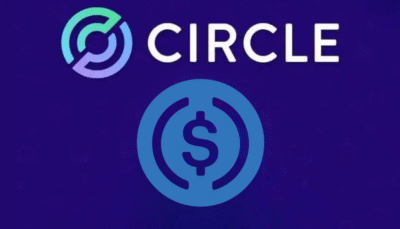From navigating the 2008 financial crisis to becoming one of Bitcoin’s most compelling macro advocates, Mark Connors has built a career at the intersection of institutional finance and systemic transformation.
With over 35 years of experience in hedge funds, risk strategy, and global markets, Connors brings a voice of both caution and clarity to a space that too often operates in extremes. On his Substack Risk Dimensions, and most recently on The CoinRock Show, Connors unpacks the very forces shaping the future of money — from bond market tremors to monetary policy gamesmanship — and explains why Bitcoin might be more necessary than ever.
He’s not here for hype. He’s here because the system, as he sees it, is running out of road.
From Literature to Wall Street: An Unconventional Rise
Mark Connors’ journey into global macro strategy didn’t begin in a finance textbook — it began with a Bachelor’s in English from the University of Virginia, followed by further study in accounting and finance at NYU’s Stern School of Business.
He began his career just as traditional finance was entering its quantitative phase — a moment that would eventually force every fund, bank, and trading desk to reconcile creativity with data, storytelling with spreadsheets.
But Connors wasn’t just an analyst — he was a builder of frameworks. After years in portfolio and market advisory, he became Global Head of Portfolio & Markets Advisory at Credit Suisse, where he worked with CIOs and fund managers to adapt data-driven strategies amid rising costs, shrinking liquidity, and what he described as “Alpha decay” in traditional price-volume models.
In 2022, he joined 3iQ Corp, one of Canada’s leading digital asset managers, as Director of Research, where he led the firm’s global macro outlook on Bitcoin and digital assets, helping frame BTC not just as a trade, but as a long-term allocation for institutions, pensions, and sovereign wealth.
“There’s no other asset that we’ve seen that provides this type of diversification benefit,” Connors said during his time at 3iQ.
“People generally think of volatility as negative. What if you had an asset where, when it got volatile, it was to the upside? That’s Bitcoin.”
By 2024, he stepped fully into the spotlight with RiskDimensions, a platform built to share macro intelligence with asset allocators, traders, and institutional thinkers looking to position themselves for the coming regime shift.
A Veteran of Crashes, Collapses, and Crossroads
Before crypto, there was Wall Street. And before Web3, there was the 2008 financial meltdown — an event that would shape Mark Connors’ worldview for good.
Having held senior roles in hedge fund strategy and institutional portfolio management during the most volatile years in modern economic history, Connors saw up close how liquidity dried up, trust broke down, and global markets teetered on the edge.
“If you were born in 1985 to today, the chances of being in recession were less than 7%. Yeah,” Connors said during his appearance on The CoinRock Show.
“We just don’t have recessions and that’s a huge deal because recessions are where bad companies go into bankruptcy.”
“QE, easing, it’s a new phenomenon, folks. These words didn’t exist. The reason it happened because in 08, there was a stepwise function where the markets went public. The government now controls overnight funding.”
This view — that we’ve passed the point of structural correction and now live in a regime of permanent intervention — drives much of his analysis today.
Watch the full episode below:
The Transition to Bitcoin: From Hedge to Infrastructure
For Connors, Bitcoin is more than just a hedge — it’s an alternative system.
His thesis isn’t built on ideology but on mathematics, monetary policy, and an understanding of how sovereign debt works. With the U.S. now carrying over $34 trillion in debt, and more than a third of it maturing within the next 12 months, he sees an impossible fiscal puzzle emerging.
“We now have the bends. We’re getting hallucinating. We’re experiencing pain from accelerating into a degree of debt that our revenue have not caught up to.” he said, referencing a scuba diving term for rising too fast.
“I’m long Bitcoin and focus on it because of the problem that we’re talking about in macro. You just can’t stuff that debt back down.”
In that context, Connors sees Bitcoin as one of the few instruments left that aren’t someone else’s liability. He contrasts it not just with fiat, but even with gold — which, while scarce, can’t compete with Bitcoin’s programmability and global accessibility.
Teaching Crypto to Watch the Right Metrics
One of Connors’ most consistent messages to the crypto community is this: stop watching the VIX — start watching the MOVE Index.
While most market watchers in crypto are familiar with equity volatility (VIX), Connors points to the MOVE Index — a measure of bond market stress — as the real indicator of systemic pressure.
“And that’s how macro works. It’s like it just nibbles, nibbles, nibbles, and then it blows. So that’s why the move index, not the VIX, because the move index can’t blow. If it blows, there’s only one option. There’s only one immediate option. You allow the failure, means that no buyers come in.”
This lens — borrowed from institutional risk desks — reframes how crypto investors should interpret macro conditions. For Connors, Bitcoin isn’t just driven by halving cycles or ETF approvals. It’s increasingly tied to global confidence in U.S. debt markets.
During his interview on The CoinRock Show, Connors broke down how fiscal policy under Trump — particularly around tariffs — has evolved into a public stress-test mechanism. Markets are now reacting not just to policy but to trial balloons floated in real time.
This matters because it reinforces a central Connors theme: policy is no longer proactive. It’s reactive.
In that type of environment, risk pricing becomes chaotic, and assets that operate independently of political systems — like Bitcoin — begin to look less speculative and more essential.
A Macro Educator for the Digital Era
Through his Substack newsletter, Risk Dimensions, and public appearances, Connors has positioned himself as one of the few voices who can translate macro-finance to digital asset communities without losing nuance.
He dives into topics like:
- The structural flaws of Treasury auctions
- Stealth quantitative easing
- The limits of debt monetization
- Why Bitcoin needs to be seen as a base layer, not just a trade
His writing isn’t designed to preach to crypto diehards — it’s meant to educate investors who think long-term, regardless of asset class.
Mark Connors’ shift from legacy finance to Bitcoin wasn’t a leap of faith. It was the logical next step in a career defined by navigating volatility, identifying systemic risk, and anticipating what comes after trust is broken.
He doesn’t promise moonshots. He doesn’t forecast supercycles.
Instead, he offers a map — one that shows how we got here, where the cracks are forming, and why Bitcoin isn’t just the best alternative… it may be the only one left standing.
Where You Can Find Mark Connors
You can follow Mark Connors and explore more of his macro insights, financial commentary, and crypto-market breakdowns through the platforms below:
- Twitter: @riskdimensions
- Substack: Risk Dimensions by Mark Connors
- LinkedIn: Mark Connors





